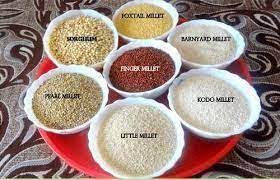Today Current Affairs: 5th December 2022 for UPSC IAS exams, State PSC exams, SSC CGL, State SSC, RRB, Railways, Banking Exam & IBPS, etc
Table of Contents
Human Tiger conflicts : Increase In Number Of Incidents

There is an increase in the number of incidents of Human- Tiger conflicts.
- Every four years, India carries out a census of the tiger population across India.
- The latest estimate put the tiger population at 2,967.
- Tigers were reportedly increasing at a rate of about 6% per annum and the area that they occupied was roughly stable, at about 89,000 square km since 2014.
- These numbers are estimated using a sophisticated system that involves photographing animals via camera traps as well as mathematical analysis.
- In 2006, India had 1,411 tigers. This rose to 1,706 in 2010 and 2,226 in 2014 on the back of improved conservation measures and new estimation methods.
- The consistent implementation of Project Tiger since 1973, whereby dedicated tiger reserves were established in India, as well as anti-poaching measures have played a significant role in tiger conservation.
- India has 53 tiger reserves.
- Uttar Pradesh’s Ranipur Tiger Reserve has become the 53rd tiger reserve of India.
- However, rising tiger numbers have meant that nearly half the tigers are now outside designated protected zones that lead to increasing instances of human-animal conflict.
Samruddhi Corridor:

Prime Minister Narendra Modi will inaugurate the first phase of the 701-km ‘Hindu Hrudayasamrat Balasaheb Thackeray Maharashtra Samruddhi Mahamarg’ on December 11.
- The Expressway will reduce the time taken to 839-km distance between Nagpur and Mumbai, to seven hours.
- This currently takes at least 17 hours.
- The Expressway, also called Samruddhi corridor, built at a project outlay of ₹55,335 crore, runs past 392 villages across 10 districts.
- This six-lane access-controlled road, designed for a top speed of 150 kmph, is the second expressway in the State after the Mumbai-Pune Expressway.
- The Expressway will have direct links to the Delhi-Mumbai Expressway and Jawaharlal Nehru Port Trust in Navi Mumbai, which will facilitate rapid transportation of goods, agricultural products and other resources from Maharashtra to various markets across the country and abroad as well.
- The Samruddhi corridor is expected to directly impact about 36% of the State’s population, and will be the country’s most extensive ‘greenfield’ route alignment with 23.65 lakh saplings and over 11 lakh trees on both sides.
India’s First Dark Night Sky Reserve:

Ladakh is all set to have India’s first Dark Night Sky Reserve at Hanle village in Changthang region. In about eighteen locations in Hanley, powerful telescopes will be installed for stargazing.
- The Hanle Dark Sky Reserve (HDSR) will come up within the Changthang Wildlife Sanctuary, situated 4,500 metres above sea level, which makes it a perfect host for telescopes.
- Ladakh is also ideal for long-term observatories and dark-sky sites because of its large arid area, high elevation, and sparse population.
- The Milky Way Galaxy is visible through the night in the Hanle region due to its cloudless skies and lower atmospheric disturbance.
- Hanley is home for the second-highest optical telescope in the world, established in 2001 by Indian Institute of Astrophysics.
- The Department of Science and Technology and Indian Institute of Astrophysics (IIA) in Bengaluru are providing support for the facility.
- The International Dark Sky Association (IDSA) defines an international dark sky reserve (IDSR) as “a public or private land of substantial size (at least 700 km², or about 173,000 acres) possessing an exceptional or distinguished quality of starry nights and nocturnal environment, and that is specifically protected for its scientific, natural, educational, cultural heritage, and/or public enjoyment”.
- A dark sky reserve requires a “core” area that has clear sky without any light pollution, which can enable telescopes to see the sky in its natural darkness.
- To support the core, it should be surrounded by a “peripheral” or “buffer” area that supports dark sky values in the core while receiving the same benefits.
- According to IDSA, it considers land suitable for dark sky sites only if it is on public or private land, is publicly accessible all or part of the year, protected for scientific, natural, educational, cultural, cultural and/or public purposes.
Indian Navy Day 2022:

India observes Navy Day on December 4 every year.
- It aims to acknowledge the role of the Indian Navy and commemorate its achievements in ‘Operation Trident’ during the 1971 Indo-Pak War.
- This year, for the first time, Navy Day Celebrations are being conducted outside the National Capital.
- This year, as India celebrates 75 years of her independence, the Indian Navy is all set to demonstrate India’s combat prowess and capability through an ‘Operational Demonstration’ at Visakhapatnam.
- The Op Demo will showcase the capability and versatility of Indian Naval ships, submarines, aircraft, and Special Forces.
- The Navy Day celebrations are aimed at fostering greater outreach, renewing maritime consciousness amongst our citizens and highlights the Navy’s contributions towards national security.
‘Millets-Smart Nutritive Food’ Conclave:

Union Minister for Commerce and Industry Shri Piyush Goyal will be the Chief Guest at the ‘Millets-Smart Nutritive Food’ Conclave to be held in New Delhi on 05 December 2022.
- The Conclave is being organized by the Ministry of Commerce and Industry through its apex agricultural export promotion body, Agricultural and Processed Food Products Export Development Authority (APEDA).
- Objective: Promoting the export of millets.
- The Conclave is to be a pre-launch event of the ‘International Year of Millets – 2023’ (IYoM-2023).
- At the first-of-its-kind Millets Conclave, the government will release e-catalogue on 30 potential importing countries and 21 millet producing states of India.
- India is one of the leading producers of millets in the world with an estimated share of around 41 percent in the global production.
- As per FAO, world production of millets in the year 2020 was 30.464 million metric tonnes (MMT) and India’s share was 12.49 MMT, which accounts to 41 percent of the total millet production.
- India recorded 27 percent growth in millet production in 2021-22 as compared to millet production in the previous year was 15.92 MMT.
- Share of export of millets is nearly 1% of the total millet production.
- Exports of millets from India include mainly whole grain and the export of value-added products of millets from India is negligible.
PM Daksh Program:

According to the Union Ministry of Social Justice and Empowerment about 5 lakh people got benefits under PM Daksh Program.
- PM-DAKSH (Pradhan Mantri Dakshta Aur Kushalta Sampann Hitgrahi) Yojana was launched by the Ministry of Social Justice & Empowerment (MoSJ&E) in 2020-21.
- It is a National Action Plan for skilling marginalized persons covering SCs, OBCs, EBCs, DNTs, Sanitation workers including waste pickers.
- The main objective of the PM-DAKSH Yojana is to increase the skill levels of the target youth by providing them short term and long term skills, followed by assistance in wage/self-employment.
- It aims to improve all-round competency of 2.7 lakh persons, over the next 5 years, beginning with nearly 0.5 lakh youth in the first year i.e. 2021-22, from the following sections of the target group:
- Artisans- who may be able to improve their revenue generation capacities within their practicing vocations;
- Women- who may be able to enter into self-employment and financially empower themselves without neglecting their domestic activities; and
- Youth- who may acquire long-term training and specialization in employable vocations and gain a better standing in the job market.
Four-Tiered Regulatory Framework For Categorisation Of Urban Co-operative Banks:

The Reserve Bank of India (RBI) recently announced a four-tiered regulatory framework for categorisation of Urban Co-operative Banks (UCBs).
- According to RBI, such framework is needed to balance the spirit of mutuality and co-operation more prevalent in banks of smaller sizes and those with limited area of operation vis-a-vis the growth ambitions of the large-sized UCBs and undertake more complex business activities.
- Based on size of deposits of the UCBs, the four-tiered regulatory framework will come into force with immediate effect.
- The extant regulatory framework classifies UCBs into two tiers – Tier I and Tier II.
- The RBI has categorised all unit UCBs and salary earners’ UCBs (irrespective of deposit size), and all other UCBs having deposits up to ₹100 crore in Tier 1.
- In Tier 2, it has placed UCBs with deposits more than ₹100 crore and up to ₹1,000 crore.
- Tier 3 will cover banks with deposits more than ₹1,000 crore and up to ₹10,000 crore.
- UCBs with deposits more than ₹10,000 crore have been categorised in Tier 4.
Coastal Red Sand Dunes:

Geologists have suggested to protect the site of Coastal Red Sand Dunes, of Visakhapatnam, Andhra Pradesh.
- The Coastal Red Sand Dunes is also known as ‘Erra Matti Dibbalu’.
- It is one of the many sites of Visakhapatnam, which have geological importance.
- The site is located along the coast and is about 20 km north-east of Visakhapatnam city and about 4 km south-west of Bheemunipatnam.
- This site was declared as a geo-heritage site by the Geological Survey of India (GSI) in 2014 and the Andhra Pradesh government has listed it under the category of ‘protected sites’ in 2016.
- Such sand deposits are rare and have been reported only from three places in the tropical regions in south Asia such as Teri Sands in Tamil Nadu, Erra Matti Dibbalu in Visakhapatnam and one more site in Sri Lanka.
- They do not occur in equatorial regions or temperate regions due to many scientific reasons.
New Energy Outlook Report 2022:

According to the 2022 New Energy Outlook report (by BloombergNEF), it is still possible to keep the temperature increase to 1.77 degrees Celsius with determined action.
- Limiting global temperature increases to 1.5 degrees Celsius will not be easy to achieve.
- Hence, the report analysed Net Zero scenarios or routes that, with a 67% certainty, restrict global warming to 1.77 degrees Celsius above pre-industrial levels by 2050.
Findings of the report:
- Greenhouse gas (GHG) emissions from developing economies, particularly India, will continue to rise and will only begin to decline by the early 2030s.
- Emissions in Europe, US, Australia and Japan have already peaked this year and will decline rapidly after that.
- However, China’s reduction is more gradual. Emissions will peak this year and then stabilise before realigning with developed-country trajectories.
- Emissions need to fall by 30% by 2030 and by 6% a year to 2040.
- For this, investments in the clean energy sector must triple that of fossil fuel to reach Net Zero by 2050.
- About 25% of total emissions can be reduced using low-carbon electricity in the transport sector and industrial processes.
- The rest of the emissions can be abated by hydrogen and carbon capture and storage (CCS).
- CCS is the process of using technology to capture carbon emissions from industrial processes or power generation, from where it is transported and stored underground for posterity.
Second Edition Of The State Of Finance For Nature Report:

The second edition of the State of Finance for Nature report was released.
- The report was released jointly by the UN Environment Programme (UNEP) along with the Economics of Land Degradation initiative of the Federal Ministry for Economic Cooperation and Development (BMZ) of Germany, the United Nations Convention to Combat Desertification (UNCCD) and the European Commission.
Findings of the Report:
- The key focus should be on doubling finance flows to NbS and reducing it for activities that increase greenhouse gas (GHG) emissions.
- Public funds make up 83% of the total and the private sector contributes approximately 17%.
- Total finance flows to NbS have increased by USD 3.9 billion from USD 150 billion (SFN 2021) to USD 154 billion per year.
- This represents year-on-year growth in investment of 2.6% in real terms across the sum of public and private financial flows.
- Finance flows to marine NbS are roughly USD 14 billion, 9% of total (terrestrial and marine).
- Annual domestic government expenditure in marine NbS is over USD 10 billion per year, including spending on marine protected areas, sustainable management of fisheries and research and development of fisheries.
- Public financial support for nature-negative activities ranges from USD 500 to 1,100 billion per year at present, which is three to seven times larger than current investments in NbS.




